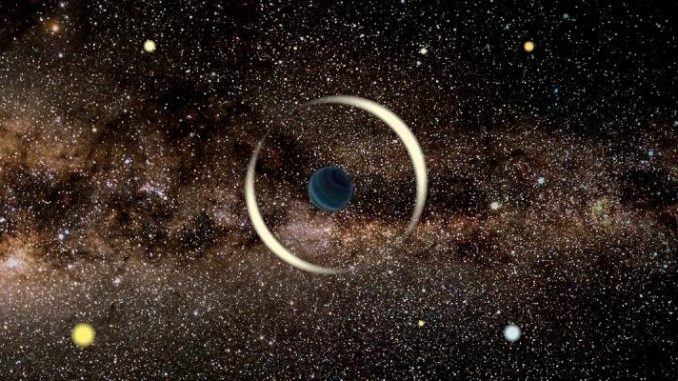
In News
Scientists have recently discovered a rogue planet in our Milky Way Galaxy, which is a rare find.
In-Detail
- Rouge planets are gravitationally unbound to any stars. Detecting them is very difficult.
- But, Polish astronomers from OGLE Survey have recently discovered a rogue planet in our Milky Way Galaxy.
- This particular rogue planet is the first one detected to be of Earth size.
- Till now, 4000 extrasolar planets have been discovered.
- A common thing that underlines planets in our solar system and extrasolar planets are that they orbit a star.
- But, planet formation and evolution theories predict free-floating or rogue planets.
- These planets are gravitationally unattached to any star.
How Exoplanets are Discovered?
- Exoplanets orbiting a star are generally discovered using the light shift in the planet’s host star.
- When an exoplanet passes in front of its host star’s disk, the star’s light drops periodically in small amounts causing the so called transits.
Detecting Rogue Planets
- Free-floating planets are hard to find using the transit method as they exhibit no radiation as do not have a host star.
- Instead, astronomers detect rogue planets using an astronomical phenomenon called gravitational microlensing.
- Microlensing emanates from Einstein’s theory of general relativity.
- According to the theory, a mass object can bend the light of a background object. Here, the mass object is the lens and the background object can be a star.
- When a mass object passes between an obeserver on earth and the distant star, the object acts as a magnifying lens where the gravity of the object deflects the light from the background star for a brief period resulting in brightening of the source star’s light.
- According to astronomers, chances of observing microlensing is extremely rare as there must be perfect alignment between the observer, the lens and the source star.
- Thus, when one is hunting for microlensing events, if only one source star is observed, one has to wait for another million years for microlensing to happen.
- Thus, surveys such as OGLE survey observes millions of source stars at the centre of the Milky Way Galaxy where microlensing events will be highest.
- As microlensing does not depend on lens’ brightness both faint and dark objects such as planets can be detected.
- The duration of microlensing depends on the mass of the lensing object – less massive objects will have shorter lensing duration.
- Microlensing events associated with stars can be observed for a few days. But, lending events associated with free-floating planets can be observed only for a few hours.
- Astronomers determine the mass of the object by measuring the duration of the lensing event and the shape of the light curve.
OGLE Survey
- Polish astronomers of the OGLE survey are using a 1.3-meter Warsaw Telescope located at Las Campanas Observatory, Chile to observe microlensing events.
- The rogue planet discovered has one of the shortest microlensing event recorded to date.
- The event is named as OGLE-2016-BLG-1928 and the duration was 42 minutes.
- This is not the first time the OGLE survey had detected a rogue planet.
- A few years ago OGLE astronomers provided the first evidence for a large population of rogue stars in the Milky Way galaxy.
- But, the new planet discovered is the smallest rogue planet discovered to date.

Leave a Reply
You must be logged in to post a comment.